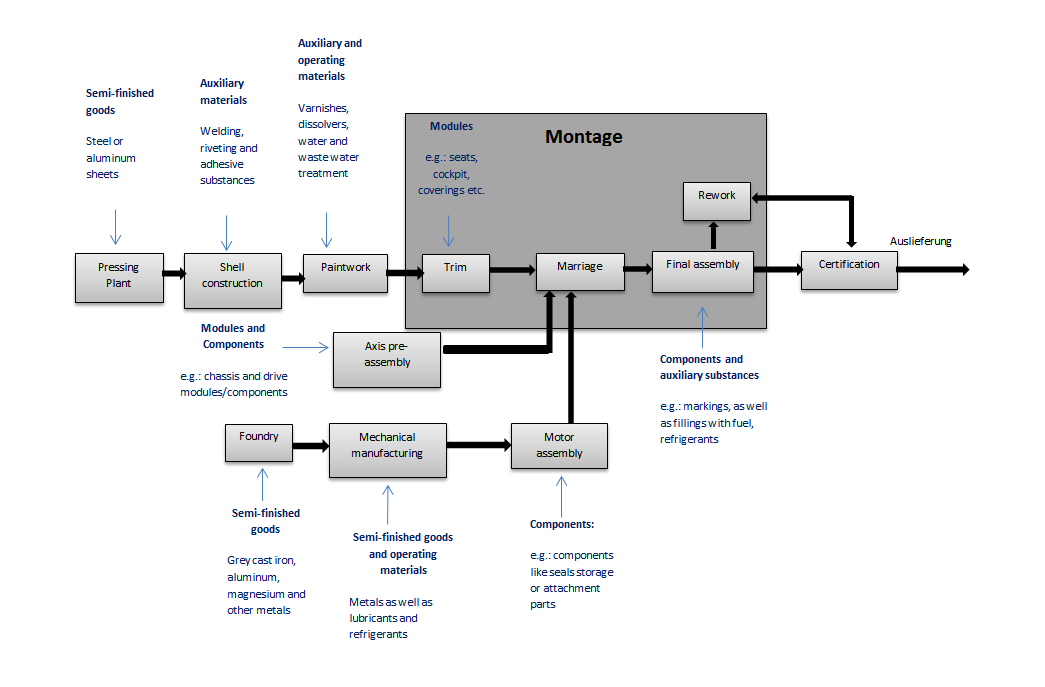Information about the automotive industry
From Efficiency Finder
Jump to navigationJump to search
Back to EFFICIENCY FINDER
GENERAL INFORMATION
- The turnover generated by the automotive sector represents 6.5% of EU GDP.
- The automobile industry has ripple effects throughout the economy, supporting a vast supply chain and generating an array of business services.
Source: Markus Kropik, 2009
Creating skilled jobs
- 12.2 million people - or 5.6% of the EU workforce - are employed in the sector.
- The 2.3 million high-skilled jobs in automotive manufacturing represent 7.7% of the EU's manufacturing employment.
Manufacturing in Europe
- Vehicle manufacturing is a strategic industry in the EU, where 18.4 million cars, vans, trucks and buses are manufactured per year.
- Automobile manufacturers operate some 296 vehicle assembly and production plants in 26 countries across Europe.
Generating government revenue
- Motor vehicles account for over €400 billion in tax contributions in just 14 EU countries.
Spurring innovation
- The auto industry is the largest private investor in R&D in Europe, investing over €44.7 billion into R&D. In 2015, about 6,000 patents were granted to the automotive sector by the EPO.
Driving safe and sustainable mobility
- Europe leads the way in clean production, with decreasing quantities of water and energy used to manufacture a vehicle, and much less CO2 and waste produced in the process.
Passenger car production and market
- Cars are the number one source of mobility in Europe.
- Over 70% of journeys are made by car - be it private car, taxi or car-sharing.
- 25% of all cars in the world are manufactured in the European Union (16 million units).
- The European car industry is a global player with exports of cars resulting in a trade balance surplus of €100.4 billion.
- The average car engine emits 28 times less carbon monoxide than 20 years ago.
- In 2015, 75% of new cars emitted less than 130g CO2 per kilometre.
- An average new car today consumes 15% less fuel per 100km than 10 years ago.
- Noise from passenger cars has been reduced by 90% since 1970.
Van, truck and bus production and market
- Commercial vehicles come in all shapes and sizes, fulfilling a huge range of functions: mini-buses, articulated buses, urban delivery vans, container trucks, ambulances, fire trucks, dumpers, crane trucks, pick-up trucks, car transporters and many more.
- Transporting 18 billion tonnes of goods per year, trucks deliver 75% of all goods carried over land in Europe.
- Trucks and vans provide an efficient, door-to-door mode of transport, making the link between producers, businesses and consumers.
- About 90% of the value of all goods in Europe is transported by truck.
- 85% of all goods carried by trucks are transported over short distances of less than 150 km.
- 18% of the world's trucks, vans and buses are manufactured in the EU (2.4 million units).
- In 2015, exports of heavy-duty vehicles generated a trade balance surplus of €4.8 billion.
- The introduction of EURO VI has been a major achievement for trucks and buses, with regulated emissions being slashed to near-zero levels, down 98% since 1990.
- Trucks' fuel consumption - and therefore CO2 emissions - have decreased by 60% since 1965.
- Buses are the most widely used and cost-efficient mode of collective passenger transport, taking us 527 billion km every year.
- Many of our other essential public services are delivered by trucks and vans: postal and courier services; emergency services; and waste management.
Source: http://www.acea.be/automobile-industry/facts-about-the-industry
APPLIED PROCESSES AND TECHNIQUES
The automotive industry includes also the supplier industry within metal surface treatment, production of printed circuit boards, textile industry, leather industry and tyre production. Depending on the supplier, different processes are needed. Therefore search Subsection DC automotive. The supplier industries mentioned above cover only a part of the whole supplier chain.
Back to EFFICIENCY FINDER
